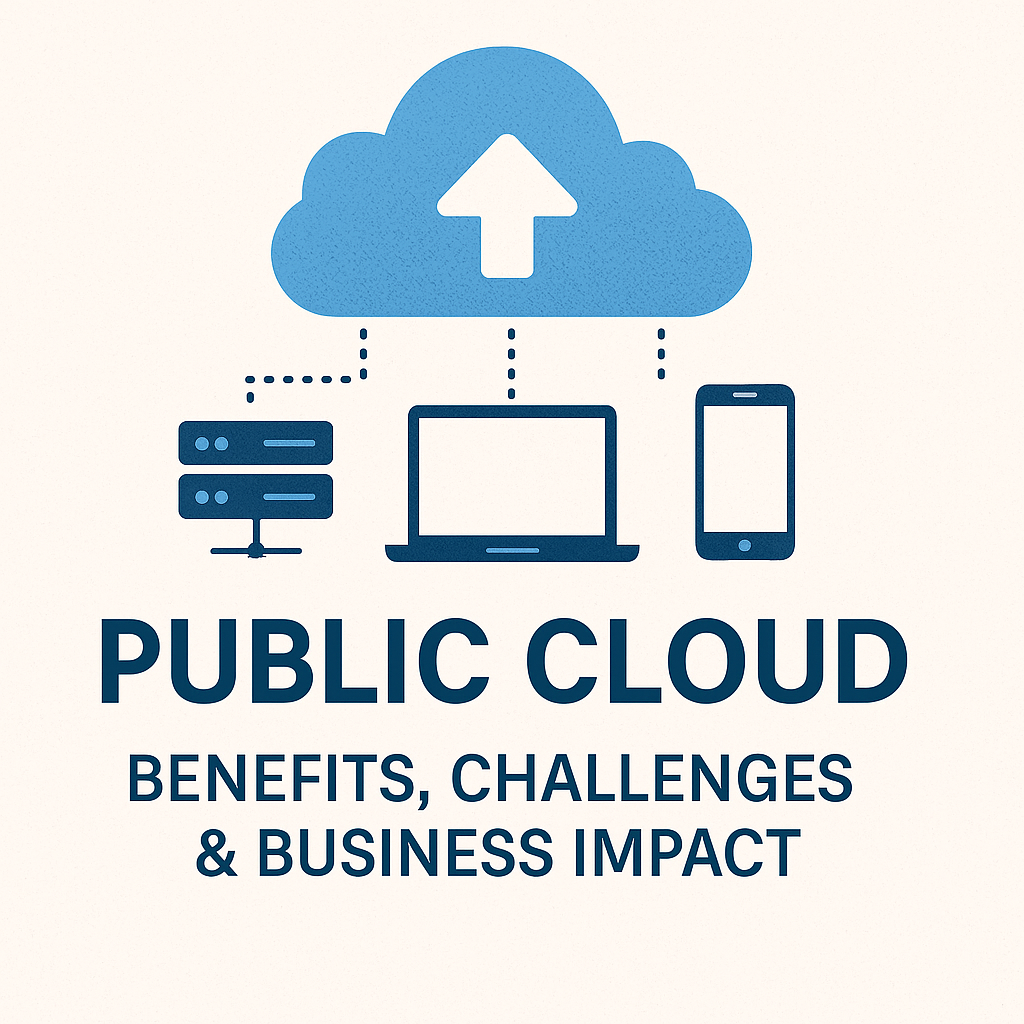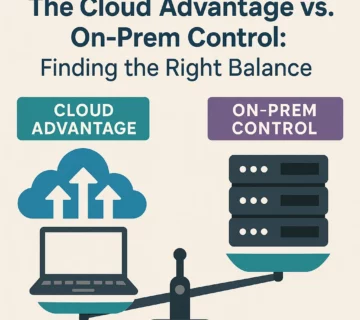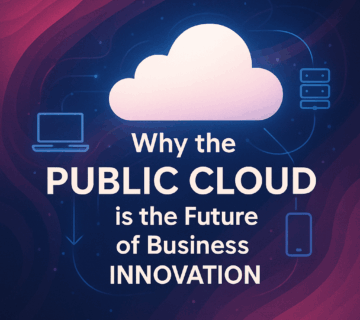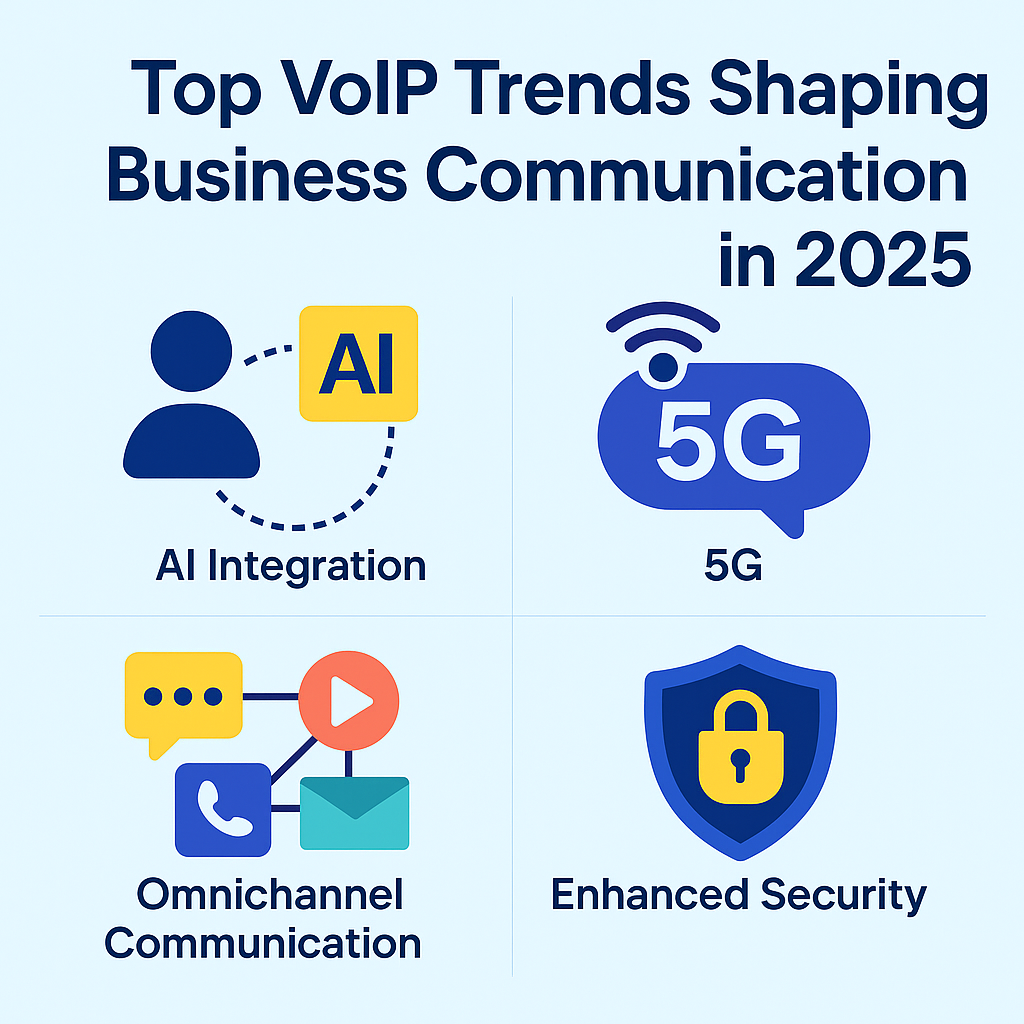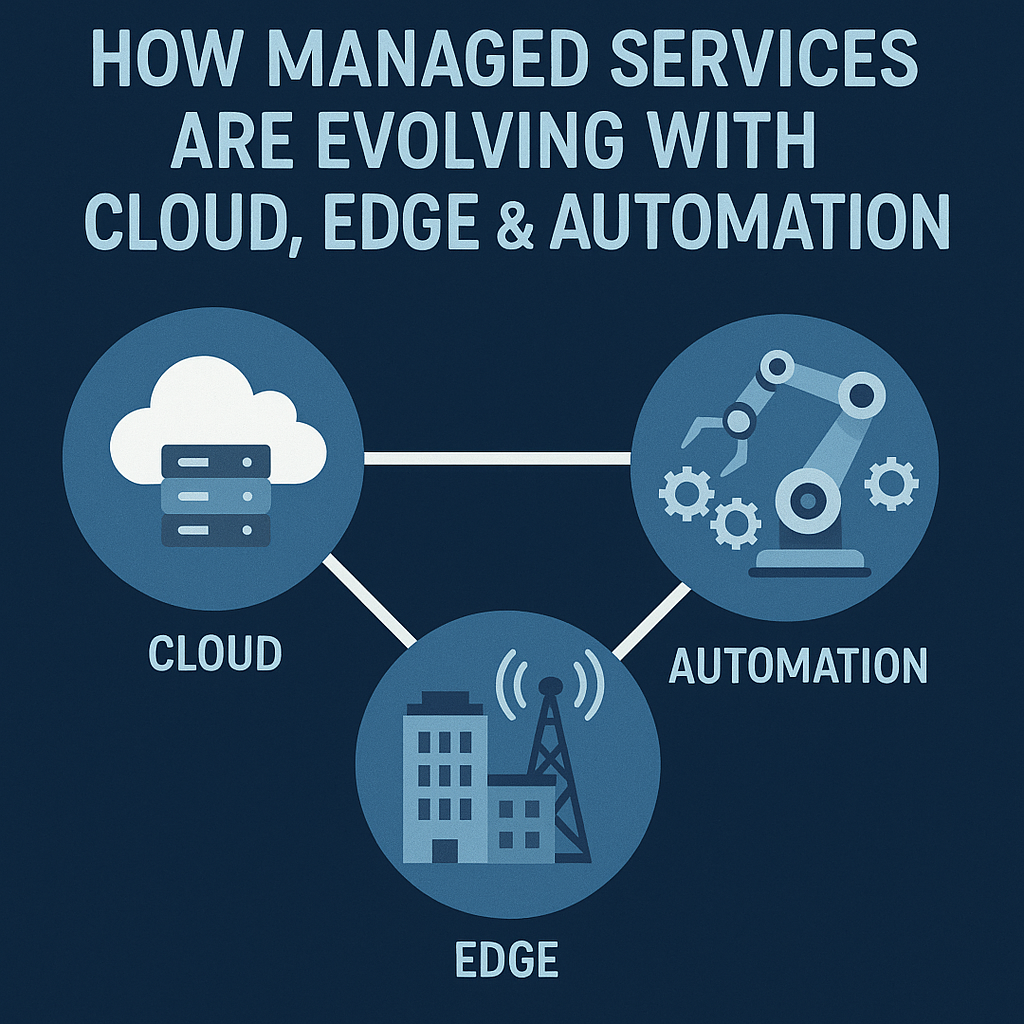Public Cloud Architecture and Service Models: A Complete Guide for Modern Businesses

The surge of digital transformation has completely redefined the way businesses design and manage their IT infrastructure. At the heart of this revolution lies public cloud computing, which has evolved from a novel concept to an essential business enabler. Understanding public cloud architecture and service models isn’t just technical knowledge—it’s strategic intelligence that can drive competitive advantage.
Understanding Public Cloud Architecture
Public cloud architecture represents a paradigm shift from traditional on-premises infrastructure to a shared, virtualized environment managed by third-party providers. Unlike private clouds that serve a single organization, public clouds offer resources to multiple customers through a multi-tenant architecture, creating economies of scale that benefit everyone involved.
Core Components of Public Cloud Infrastructure
The foundation of any public cloud rests on several interconnected layers that work together seamlessly. The physical infrastructure layer consists of massive data centers strategically distributed across global regions, housing thousands of servers, storage systems, and networking equipment.These data centers are built to ensure uninterrupted operations, incorporating backup power supplies, state-of-the-art cooling technologies, and enterprise-level security protocols.
Above the physical layer sits the virtualization layer, which abstracts hardware resources and enables the dynamic allocation of computing power. This abstraction allows cloud providers to maximize resource utilization while providing customers with the flexibility to scale resources up or down based on demand. Hypervisors manage virtual machines, while container orchestration platforms handle containerized applications, creating multiple deployment options for different use cases.
The orchestration and management layer serves as the brain of the cloud infrastructure, coordinating resource allocation, monitoring system health, and automating routine tasks. This layer includes sophisticated algorithms for load balancing, auto-scaling, and resource optimization, ensuring optimal performance while minimizing costs.
Multi-Tenancy and Resource Sharing
One of the defining characteristics of public cloud architecture is its multi-tenant nature. Multiple customers share the same physical infrastructure while maintaining complete isolation of their data and applications. This sharing model requires sophisticated security mechanisms, including virtual private networks, encrypted storage, and identity management systems that prevent unauthorized access between tenants.
The shared responsibility model is crucial to understand in this context. Cloud providers are responsible for securing the underlying infrastructure, including physical security, network controls, and host operating system patches.In a cloud setup, it is the customer’s responsibility to safeguard their data, manage application security, and control user access
The Three Pillars: IaaS, PaaS, and SaaS
Public cloud offerings are generally divided into three main service models, each providing varying degrees of abstraction and control for users.
Infrastructure as a Service (IaaS): The Foundation Layer
Infrastructure as a Service (IaaS) is the foundational layer of cloud computing, delivering virtualized compute, storage, and networking resources through the internet. This model offers the greatest flexibility and control, allowing organizations to rent virtual machines, storage, and networking components without investing in physical hardware.
The primary advantage of IaaS lies in its ability to eliminate capital expenditures for hardware while providing instant scalability. Organizations can provision new servers within minutes rather than weeks, enabling rapid response to changing business needs. Popular IaaS providers include Amazon Web Services EC2, Microsoft Azure Virtual Machines, and Google Compute Engine.
IaaS is particularly valuable for organizations with existing applications that require minimal modification for cloud deployment. Development and testing environments benefit significantly from IaaS, as teams can quickly spin up isolated environments for experimentation without affecting production systems. Disaster recovery scenarios also leverage IaaS effectively, providing geographically distributed backup infrastructure at a fraction of traditional costs.
However, IaaS requires significant technical expertise to manage effectively. Organizations must handle operating system updates, security patches, and application maintenance, making it less suitable for companies lacking robust IT teams.
Platform as a Service (PaaS): The Developer’s Paradise
PaaS elevates the abstraction level by providing a complete development and deployment platform in the cloud.This service model goes beyond basic infrastructure by offering integrated development frameworks, database services, middleware, and runtime environments.
The transformative power of PaaS lies in its ability to accelerate application development and deployment cycles.With PaaS, developers can concentrate on coding and feature development without the burden of handling servers, database administration, or middleware setup. Popular platforms in this category include Google App Engine, Microsoft Azure App Service, and Heroku.
PaaS platforms typically include integrated development environments, version control systems, automated testing frameworks, and continuous integration pipelines. These tools create a streamlined workflow that can reduce development time by significant margins while improving code quality through automated testing and deployment processes.
The model particularly excels in scenarios requiring rapid prototyping, microservices architecture, or applications with variable load patterns. Modern PaaS platforms support multiple programming languages and frameworks, enabling organizations to choose the best tools for their specific requirements without worrying about underlying infrastructure compatibility.
Software as a Service (SaaS): Ready-to-Use Solutions
SaaS represents the highest level of abstraction, delivering fully functional applications over the internet.These applications are delivered via web browsers or mobile apps, eliminating the need for local installation or ongoing maintenance by the user. His model has revolutionized software consumption, shifting from ownership to subscription-based access.
The appeal of SaaS lies in its simplicity and immediate value delivery. Organizations can deploy enterprise-grade applications within hours rather than months, with automatic updates, maintenance, and security patches handled by the service provider. Well-known SaaS solutions include Salesforce for managing customer relationships, Microsoft 365 for productivity and office tools, and Slack for seamless team communication.
SaaS applications typically offer superior reliability compared to on-premises alternatives, with service level agreements guaranteeing uptime percentages that would be difficult and expensive to achieve independently. The subscription model also provides predictable costs and eliminates the need for significant upfront investments in software licenses.
However, SaaS can introduce challenges around data control, customization limitations, and vendor lock-in. Organizations must carefully evaluate these trade-offs when considering SaaS adoption for critical business functions.
Emerging Service Models and Specialized Offerings
The cloud ecosystem continues to evolve, spawning new service models that address specific market needs and technological advances.
Function as a Service (FaaS): Serverless Computing
FaaS, commonly known as serverless computing, represents the newest evolution in cloud services. This model allows developers to deploy individual functions or pieces of code that execute in response to events, with the cloud provider handling all server management, scaling, and resource allocation automatically.
Serverless computing delivers exceptional simplicity for applications, especially those that experience fluctuating or unpredictable workloads. Organizations only pay for actual execution time, making it extremely cost-effective for sporadic workloads. AWS Lambda, Google Cloud Functions, and Azure Functions are leading FaaS platforms.
Microservices architecture pairs naturally with FaaS, enabling organizations to build applications as collections of small, independent functions that scale independently based on demand. This approach can significantly reduce operational complexity while improving application resilience.
Container as a Service (CaaS): Orchestrated Excellence
CaaS provides a middle ground between IaaS and PaaS, offering container orchestration platforms without requiring organizations to manage the underlying infrastructure. This model has gained tremendous popularity with the rise of Docker containers and Kubernetes orchestration.
CaaS platforms handle container deployment, scaling, networking, and service discovery while providing developers with fine-grained control over application configuration and dependencies. This model combines the flexibility of containers with the operational simplicity of managed services, making it ideal for organizations adopting cloud-native development practices.
Security Architecture in Public Clouds
Security in public cloud environments requires a comprehensive approach that spans multiple layers and shared responsibilities. Modern cloud providers implement security measures that often exceed what individual organizations can achieve independently, leveraging economies of scale to invest in advanced security technologies and expertise.
Physical security begins at the data center level, with biometric access controls, surveillance systems, and armed security personnel protecting the infrastructure. Network security includes distributed denial-of-service protection, intrusion detection systems, and encrypted communication channels between all components.
Encryption is a cornerstone of cloud security—safeguarding stored information through encryption at rest, and protecting data transfers between systems with encryption in transit. Many cloud providers now offer customer-managed encryption keys, giving organizations additional control over their data security.
Identity and access management systems provide the foundation for securing cloud resources, implementing principles of least privilege and supporting multi-factor authentication. These systems integrate with existing corporate directories and enable fine-grained access controls across all cloud services.
Performance and Scalability Considerations
Public cloud architecture is designed to handle massive scale and variable demand patterns that would be impractical for traditional data centers. Auto-scaling capabilities automatically adjust resource allocation based on real-time demand, ensuring optimal performance while minimizing costs.
Load balancing distributes traffic across multiple servers or regions, preventing any single component from becoming a bottleneck. Geographic distribution of resources enables low-latency access for global users while providing disaster recovery capabilities.
Content delivery networks integrate seamlessly with cloud platforms, caching static content at edge locations closer to end users. This integration can dramatically improve application performance, particularly for web-based applications with global audiences.
Cost Models and Economic Advantages
The economic benefits of public cloud adoption extend far beyond simple cost reduction. The shift from capital expenditure to operational expenditure fundamentals changes how organizations approach IT budgeting and financial planning.
Pay-as-you-use pricing models align costs directly with business value, eliminating waste from over-provisioned infrastructure. Reserved instance options provide significant discounts for predictable workloads, while spot instance markets offer deep discounts for flexible, interruption-tolerant applications.
The elimination of hardware refresh cycles and the reduction in IT staffing requirements create additional cost savings that compound over time. Organizations can redirect these savings toward innovation and business growth initiatives rather than infrastructure maintenance.
Future Directions and Innovations
The public cloud landscape continues to evolve rapidly, with artificial intelligence and machine learning services becoming increasingly sophisticated and accessible. Edge computing capabilities are extending cloud services closer to end users and IoT devices, reducing latency for real-time applications.
Quantum computing services are beginning to emerge from major cloud providers, offering access to quantum processors for research and experimentation. These services democratize access to cutting-edge computing technologies that would be impossible for most organizations to develop independently.
Sustainability initiatives are driving innovations in green computing, with cloud providers investing heavily in renewable energy and carbon-neutral operations. These efforts align with corporate environmental goals while potentially reducing long-term operational costs.
Making the Right Choice for Your Organization
Selecting appropriate cloud service models requires careful analysis of organizational needs, technical capabilities, and business objectives. IaaS provides maximum flexibility but requires significant technical expertise. PaaS accelerates development but may introduce vendor dependencies. SaaS offers immediate value but limits customization options.
The most successful cloud strategies often combine multiple service models, using each where it provides the greatest value. A hybrid approach might use IaaS for legacy applications, PaaS for new development projects, and SaaS for standard business functions like email and collaboration.
The journey to public cloud adoption represents more than a technology migration—it’s a fundamental transformation of how organizations build, deploy, and manage their digital capabilities. Success requires not just technical planning but also organizational change management, skills development, and strategic thinking about how cloud capabilities can enable new business models and competitive advantages.
A solid grasp of public cloud architecture and its service models is essential for organizations to make well-informed decisions on their digital transformation journey. The organizations that master these concepts and apply them strategically will be best positioned to thrive in an increasingly digital world.

